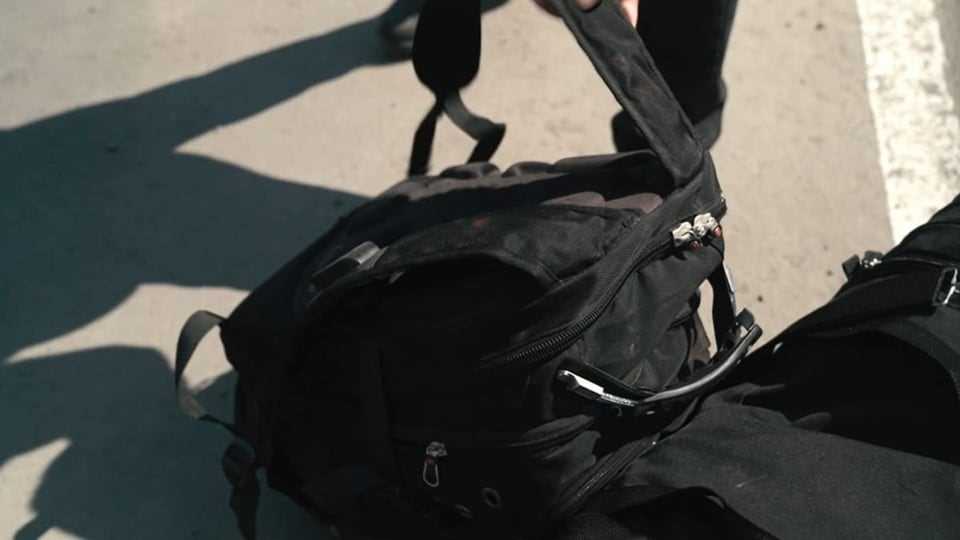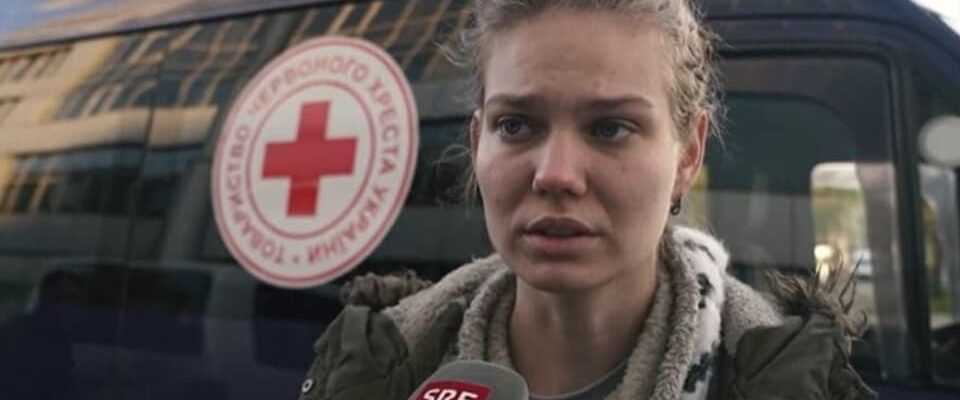contents
Filtration camps belong to the darkest chapter of Russian history. They are set up again in the Ukraine war.
It’s been three days since the young woman escaped the hell of Mariupol. “Many of us who have lived in air-raid shelters for two months are still in a state of stress,” says Lera. She and the other people managed to escape from the Azovstal steelworks with the support of the Red Cross and the UN. On the way from the port city of Mariupol to the city of Zaporizhia, they were stopped by the Russian occupying forces and taken to a so-called filtration camp.
Legend:
Lera was lucky: after just one night, the young Ukrainian was able to leave the filtration camp.
SRF
“Women and men are divided into different tents. It is controlled whether one serves in the army. The body is checked for bruises left behind by protective vests. Hands are checked to see if weapons have been used. Women have to undress too. Women control women, men control men », the young woman describes her experiences.
ruthlessness and violence
Lera was able to leave the filtration camp after one night. But two people from their group were held back. Including the mother of a four-year-old girl. “She used to be a doctor in the Ukrainian army. The inspectors in the camp found that out from photos on social media,” says Lera. She had to promise her mother that she would take her daughter to safety in Zaporizhia. The four-year-old girl is now in the care of her grandmother’s brother. But the mother is still in the filtration camp.
In addition to international organizations, private individuals are also trying to evacuate people from Mariupol and from the areas occupied by the Russian army. Your commitment is life-threatening. Because they too are arrested by the Russian occupiers.
‘They searched all the pockets. In addition to Ukrainian hryvnias, they found a few dollars in my wallet. That was proof enough for her. They made me kneel with my head against the wall. Then they started kicking me with their knees,” says a bus driver who twice went to Mariupol to pick up people there.

Legend:
There are traces of blood on the backpack. The man who evacuates people from Mariupol in a bus does not want to show his face.
SRF
Traces of dried blood can be seen on the back padding of his backpack. After a few hours, the Russian occupiers would have let him go. Others, however, have been stuck in the filtration camps for weeks.
“No one says anything”
At least four filtration camps have been set up in Russian-held territories since the start of the invasion of Ukraine. Nobody knows how many people are in these camps. A Ukrainian whose partner is in one of the camps tells SRF that she tried in vain to find out the reasons for her detention.
I am told not to worry, the people in the filtration camps are safe. But I understand that this is not the case
‘No one says anything. The various state organs in the Russian-occupied territories are blaming each other. I am told not to worry, the people in the filtration camps are safe. But I understand that this is not the case, »says the woman.
Release does not mean homecoming
Even those who are released after a long stay in a filtration camp cannot return home. Because the Russian army only allows emigration to Russia, but not to the areas under the control of the Ukrainian army. According to Ukrainian authorities, more than a million Ukrainians were deported to Russia in this way.
The Ukrainian authorities say they are trying to help people return to Ukraine. With the help of some neighboring countries, it was even possible to evacuate individual families from Russia, says the Ukrainian ombudswoman for human rights, Lyudmyla Denisova. Given this large number, it may be several years before they can all return to Ukraine.
